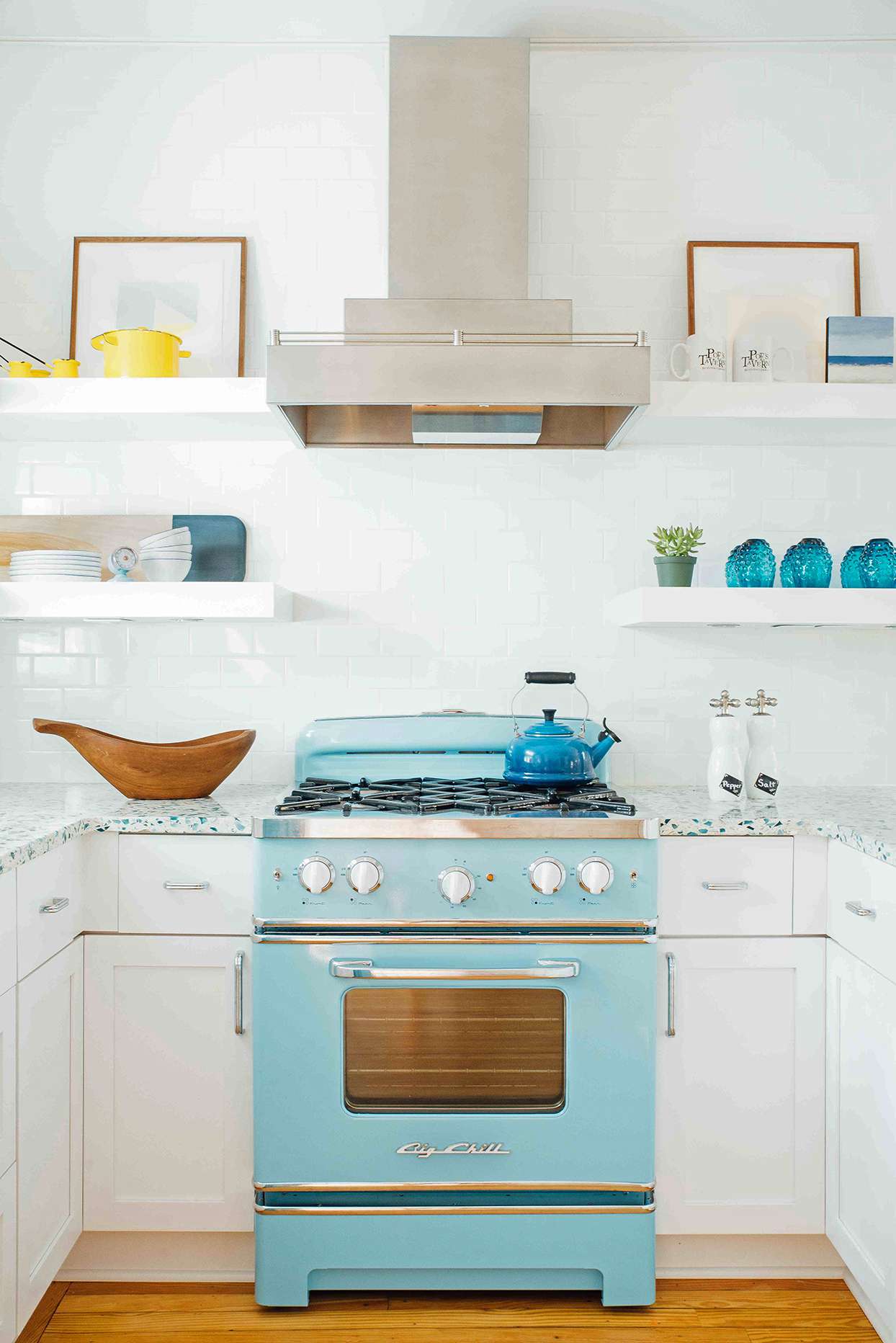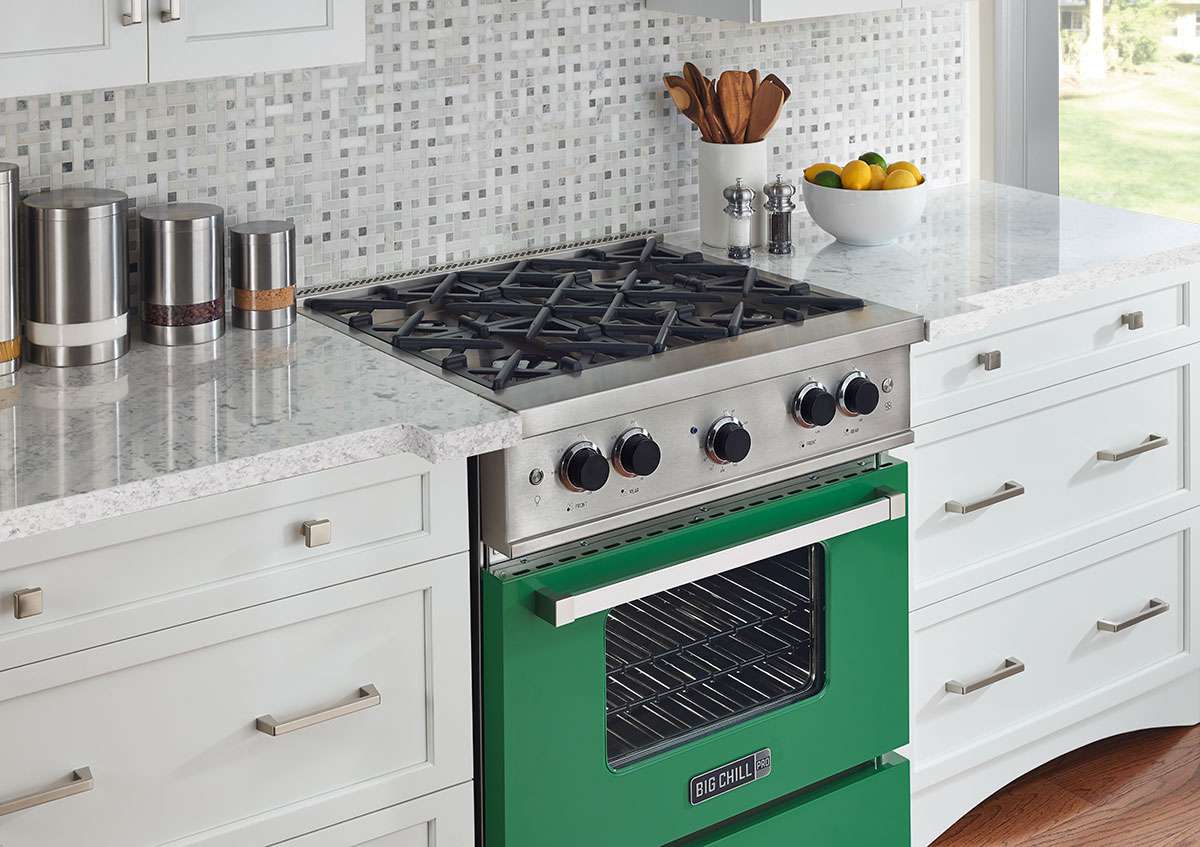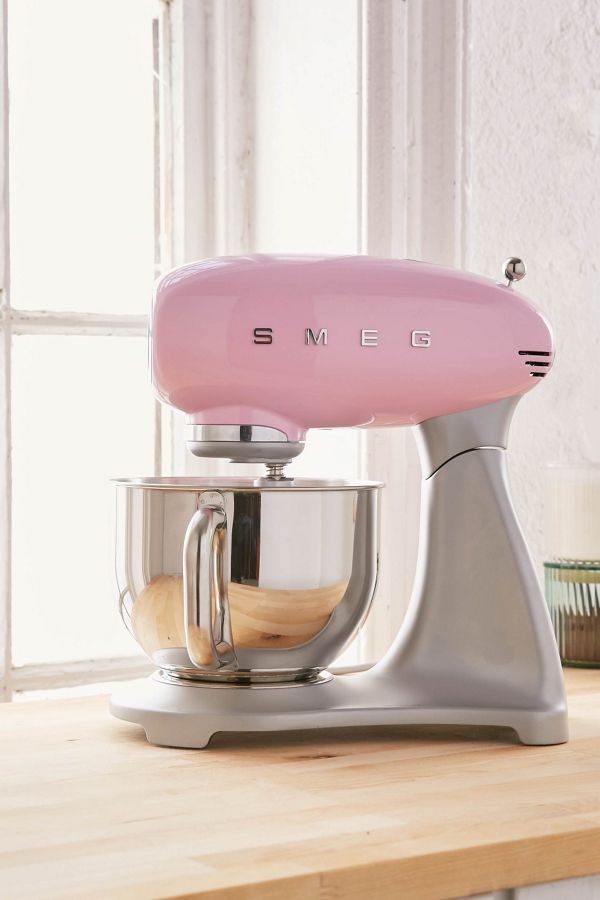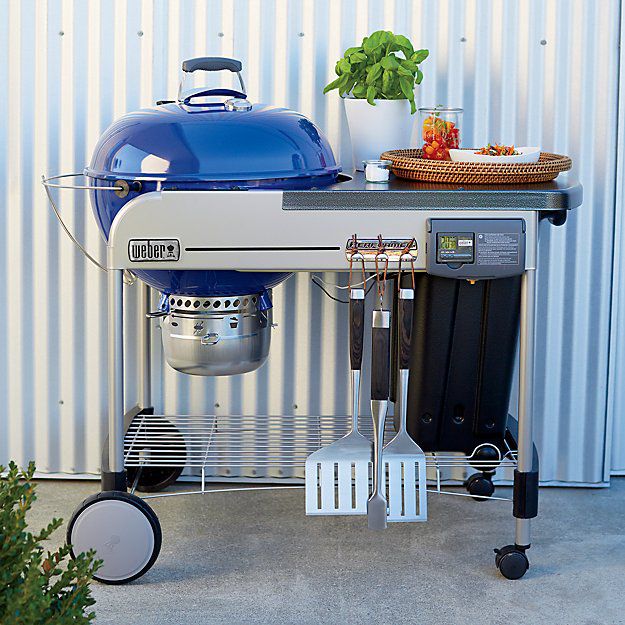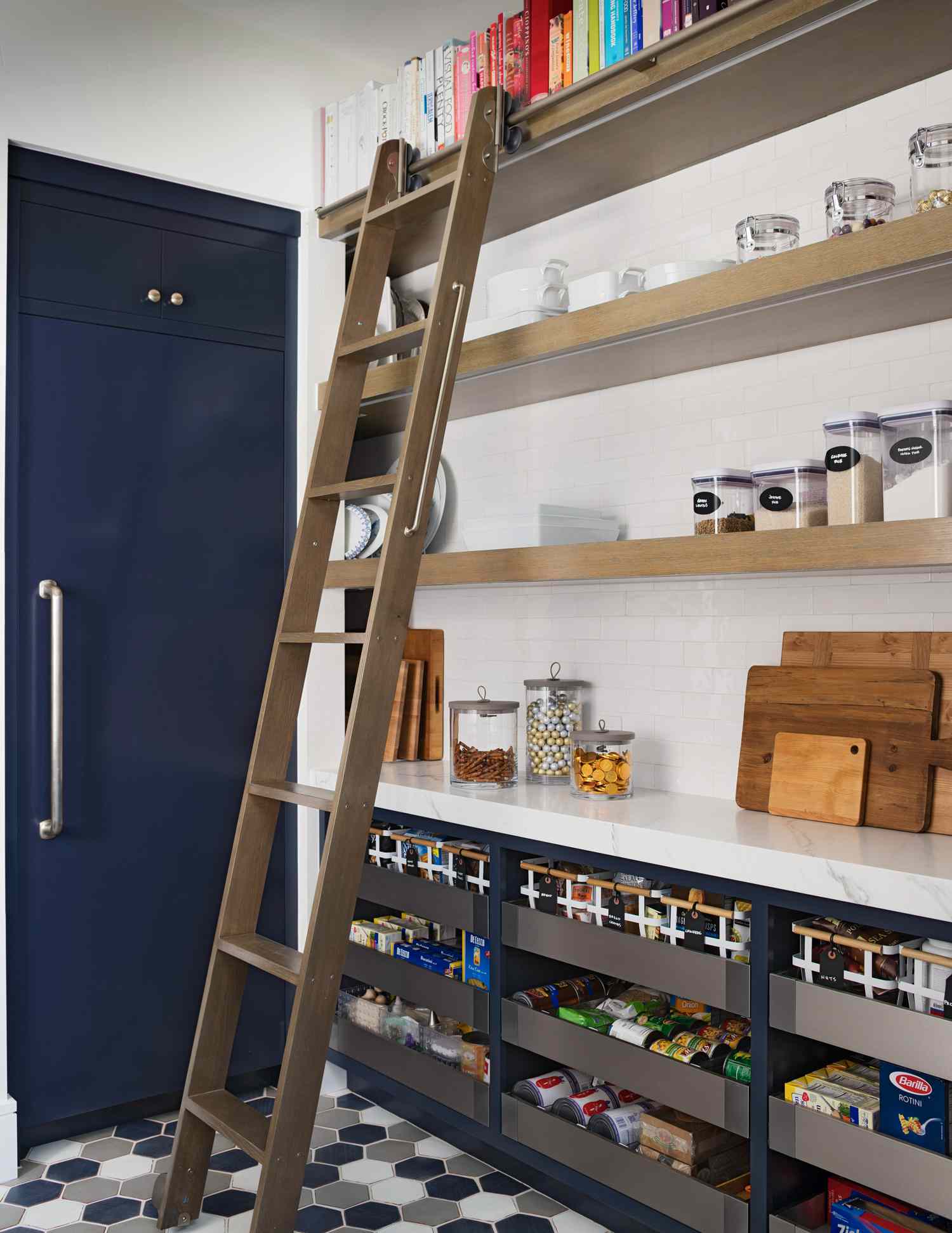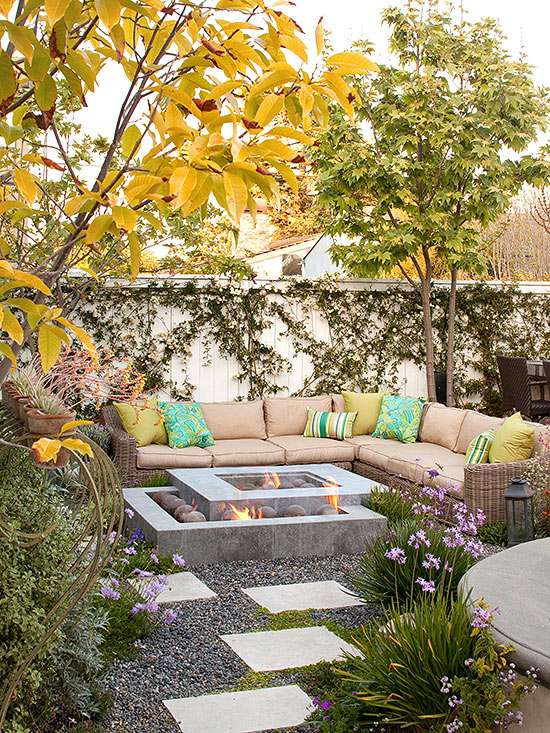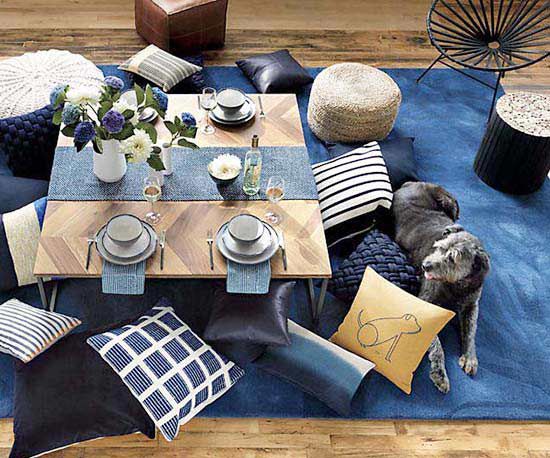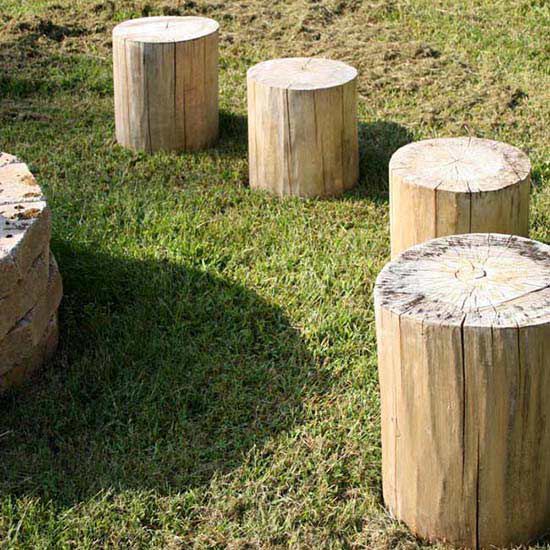Archives for July 2019
Choosing a New Faucet by Joe Szabo, Scottsdale Real Estate Team
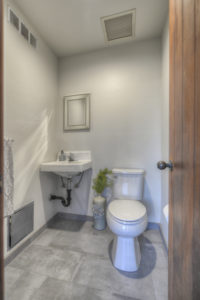 Choosing a faucet is tricky. The variety of styles, materials and finishes-and prices-can be overwhelming. You’ll probably live with your new faucet a long time, so you might as well love it. Here are seven things to consider before getting in the checkout line.
Choosing a faucet is tricky. The variety of styles, materials and finishes-and prices-can be overwhelming. You’ll probably live with your new faucet a long time, so you might as well love it. Here are seven things to consider before getting in the checkout line.
Looks aren’t everything
Most people choose a faucet based on looks alone. And that’s a mistake. Looks are important, but you can usually get the look you want without compromising on convenience and long-term dependability. For advice on those practical considerations, we talked with faucet designers, manufacturers, retailers and plumbers. Here’s what we learned.Spend enough but not too much
Plan to spend at least $65 for a bath faucet and at least $100 for a kitchen faucet. You might get a great faucet for less, but it’s more likely that you’d get a low-quality faucet. If you spend much more, you’re paying for extra features or style rather than basic reliability or durability.Watch the spout height and reach
Faucet spouts vary a lot in height and reach, and most of the time you can just choose the look you like best. But if you have a shelf above the sink, a tall spout may not fit. With a three-bowl kitchen sink, a spout with a short reach may not extend to all the bowls. A bath faucet with a short reach might cause you to slop water behind the spout when you wash your hands.Choose ceramic valves
If you want to avoid having a faucet that drips, get one with ceramic valves. Other types of valves are usually drip-free for years, but they can’t match the long-term reliability of ceramic. Faucets with ceramic valves cost about the same as other faucets.Some finishes are tougher than others
Here’s Rule No. 1 of faucet finishes: Choose a finish that matches nearby cabinet hardware, towel bars, etc. Mismatches look bad. If you plan to replace existing hardware, your choice of faucet finishes is wide open. The vast majority of faucets have polished chrome, satin nickel or bronze finishes. All of these finishes are durable and keep their good looks for years. But some are more durable than others. Chrome is the most durable finish and the easiest to keep clean-that’s why it’s always been the favorite for commercial kitchens and public bathrooms. If your faucet gets heavy use, it’s your best bet for long-term toughness. Nickel finishes are usually labeled “brushed,” “satin” or “stainless steel” and have a dull shine. They’re durable but prone to fingerprints and water spots, so they’re harder to keep clean. Some have a coating that reduces stains and smudges, but that coating isn’t as durable as metal and may chip or wear. Bronze faucets have a brownish tone and are often called “oiled” or “rubbed” bronze. But the surface is a coating (such as epoxy) rather than metal. This coating is tough stuff, but can be chipped or scratched more easily than metal.Count the holes in your sink
If you want to switch from two handles to one, you have to think about the number of holes in the sink. Most sinks have three holes: one for the hot handle, one for the cold and one under the spout. Some single-handle faucets include a cover plate to hide the extra holes. But some don’t, so check the label. If you currently have a “wide spread” bathroom faucet with two handles far from the spout, you can’t switch to a single-handle model. If you want a kitchen faucet with a “pull-down” sprayer mounted in the spout, there will be an empty sprayer hole. But the solution is simple: install a soap dispenser. Your new faucet may even include one.A single handle is more convenient
Two-handle faucets have a stylish symmetry that suits many bathrooms, especially traditional ones. But in practical terms, single-handle faucets have all the advantages. They’re just plain more convenient; water temperature adjustment is easier and there’s one less handle to clean.Pull-down sprayers are better
If you’ve ever had a “side” sprayer (a spray handle mounted in the sink), you’ve probably had dribbles or leaks. And you might assume you’d have similar (and more expensive) trouble with a faucet-mounted sprayer like the one shown here. Probably not. All of our experts told us that “pull-down” sprayers have proven much more reliable than the old side sprayers. Please note that this Scottsdale Real Estate Blog is for informational purposes and not intended to take the place of a licensed Scottsdale Real Estate Agent. The Szabo Group offers first class real estate services to clients in the Scottsdale Greater Phoenix Metropolitan Area in the buying and selling of Luxury homes in Arizona. Award winning Realtors and Re/MAX top producers and best real estate agent for Luxury Homes in Scottsdale, The Szabo group delivers experience, knowledge, dedication and proven results. Contact Joe Szabo at 480.688.2020, info@ScottsdaleRealEstateTeam.com or visit www.scottsdalerealestateteam.com to find out more about Scottsdale Homes for Sale and Estates for Sale in Scottsdale and to search the Scottsdale MLS for Scottsdale Home Listings.Before Buying a Ceiling Fan by Joe Szabo, Scottsdale Real Estate Team
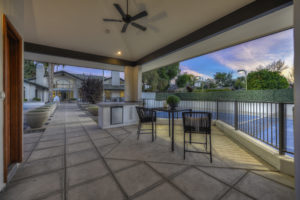 Ceiling Fans are great for improving room comfort while at the same time producing energy and cost savings. Homeowners are experiencing higher energy costs and it’s only going to get worse. There has never been a better time than now to consider the purchase of a ceiling fan(s)and to enjoy both the aesthetic as well as energy saving benefits of owning a ceiling fan. In summer ceiling fans allow you to feel cool without having to turn the air conditioning full-on therefore saving energy and money. Setting your thermostat higher with a ceiling fan running can save up to 40% on air conditioning bills. Studies show this can make a room feel up to seven degrees cooler. In winter ceiling fans should be reversed and used to push the warm air down from the ceiling to keep the heat in the lower part of the room. This is especially important in rooms with tall ceilings, resulting in energy and money savings from recirculating the warm air allowing one to set the thermostat lower.
Larger Rooms Need Bigger Fans
For maximum performance, choose the right fan to fit your room size. In a room up to 50 square feet, like a bathroom, choose a 29″ fan. Breakfast nooks and laundry rooms up to 75 Sq. ft. choose a 36″ blade span. Medium size rooms up too 100 square feet can fit fans from 36″ to 42″. Standard bedrooms and family rooms up to 400 square feet work most efficiently with fans that are 50″ or 52″. Great rooms or large areas over 400 sq. ft. require a ceiling fan with a 54″ or larger blade span. For long or large rooms, you should consider more than one fan to handle your cooling requirements. For maximum comfort, the fan should be placed as close to the center of the room as possible. Keep blade tips at least 18 inches from any wall. Ceilings Lower Than Eight Feet. Use the Ceiling Mounting Kit or go with a Snugger or Hugger model to achieve the desired seven-foot blade clearance. For ceilings above eight feet, the fan should be hung by a downrod extension so that the fan is eight or nine feet from the floor. You will want to hang it at this level since the higher the fan is hung above eight feet, the less air circulates near the floor.
Bathroom and Outdoor Ceiling Fans
Look for a bathroom ceiling fan specifically designed and UL-listed for damp locations. Bathroom Ceiling Fans start at 29 inch blade spans since smaller rooms require less air movement and space is usually limited. Want one for the covered outdoor patio? Opt for an Outdoor Ceiling Fan that this is UL-listed for wet locations. Outdoor ceiling fans can also be used indoors. They have protective motor coverings to keep moisture from corroding the motor.
Fan Blade Pitch and Size
Fan blades determine the amount of air being circulated throughout the room. Fan blade pitch is usually between a 12-15 degree angle for optimal circulation. Fan blades must be weighted and matched as a balanced set to avoid having your fan wobble. Ceiling fans with less than a 12 degree angle will not circulate air as well and be less efficient. The greater the angle or higher the pitch of the blade the more air circulation you will have in your room.
The Motor
The motor is responsible for producing quiet operation while driving the blades for air movement. Look for high-quality motors with heavy-duty windings and sealed bearings that are permanently lubricated. Smaller, less powerful motors found on lower quality fans may produce higher operating temperatures, lower air circulation and noisier operation. Motors are designed to work flawlessly for long periods of time and should have a long lasting life.
Consider the Warranty
When you choose to purchase a ceiling fan, look for a good warranty or the life of your fan. Some manufacturers offer a lifetime warranty and in-home service. Good tip is that the larger or more powerful the motor and the more you spend usually correlates to the better and longer warranted fan. Again, we believe there is a true correlation in terms of you get what you pay for.
Installation
Installation is so easy that with a few basic skills anyone can install the product themselves in an hour or so. Almost all ceiling fans come with step by step instructions so your new fan can be up and working efficiently in no time at all. You will need to determine if you will need electrical wiring brought to the ceiling of the room where you want to add the fan. Since most of the time homeowners are replacing existing lights with a ceiling fan, the wiring is usually already in place. Some fans come with a support system to assist you by freeing your hands to make wiring connections allowing you to hang a hook from the electrical box to the fan to support it while you install it.
Ceiling Fans are great for improving room comfort while at the same time producing energy and cost savings. Homeowners are experiencing higher energy costs and it’s only going to get worse. There has never been a better time than now to consider the purchase of a ceiling fan(s)and to enjoy both the aesthetic as well as energy saving benefits of owning a ceiling fan. In summer ceiling fans allow you to feel cool without having to turn the air conditioning full-on therefore saving energy and money. Setting your thermostat higher with a ceiling fan running can save up to 40% on air conditioning bills. Studies show this can make a room feel up to seven degrees cooler. In winter ceiling fans should be reversed and used to push the warm air down from the ceiling to keep the heat in the lower part of the room. This is especially important in rooms with tall ceilings, resulting in energy and money savings from recirculating the warm air allowing one to set the thermostat lower.
Larger Rooms Need Bigger Fans
For maximum performance, choose the right fan to fit your room size. In a room up to 50 square feet, like a bathroom, choose a 29″ fan. Breakfast nooks and laundry rooms up to 75 Sq. ft. choose a 36″ blade span. Medium size rooms up too 100 square feet can fit fans from 36″ to 42″. Standard bedrooms and family rooms up to 400 square feet work most efficiently with fans that are 50″ or 52″. Great rooms or large areas over 400 sq. ft. require a ceiling fan with a 54″ or larger blade span. For long or large rooms, you should consider more than one fan to handle your cooling requirements. For maximum comfort, the fan should be placed as close to the center of the room as possible. Keep blade tips at least 18 inches from any wall. Ceilings Lower Than Eight Feet. Use the Ceiling Mounting Kit or go with a Snugger or Hugger model to achieve the desired seven-foot blade clearance. For ceilings above eight feet, the fan should be hung by a downrod extension so that the fan is eight or nine feet from the floor. You will want to hang it at this level since the higher the fan is hung above eight feet, the less air circulates near the floor.
Bathroom and Outdoor Ceiling Fans
Look for a bathroom ceiling fan specifically designed and UL-listed for damp locations. Bathroom Ceiling Fans start at 29 inch blade spans since smaller rooms require less air movement and space is usually limited. Want one for the covered outdoor patio? Opt for an Outdoor Ceiling Fan that this is UL-listed for wet locations. Outdoor ceiling fans can also be used indoors. They have protective motor coverings to keep moisture from corroding the motor.
Fan Blade Pitch and Size
Fan blades determine the amount of air being circulated throughout the room. Fan blade pitch is usually between a 12-15 degree angle for optimal circulation. Fan blades must be weighted and matched as a balanced set to avoid having your fan wobble. Ceiling fans with less than a 12 degree angle will not circulate air as well and be less efficient. The greater the angle or higher the pitch of the blade the more air circulation you will have in your room.
The Motor
The motor is responsible for producing quiet operation while driving the blades for air movement. Look for high-quality motors with heavy-duty windings and sealed bearings that are permanently lubricated. Smaller, less powerful motors found on lower quality fans may produce higher operating temperatures, lower air circulation and noisier operation. Motors are designed to work flawlessly for long periods of time and should have a long lasting life.
Consider the Warranty
When you choose to purchase a ceiling fan, look for a good warranty or the life of your fan. Some manufacturers offer a lifetime warranty and in-home service. Good tip is that the larger or more powerful the motor and the more you spend usually correlates to the better and longer warranted fan. Again, we believe there is a true correlation in terms of you get what you pay for.
Installation
Installation is so easy that with a few basic skills anyone can install the product themselves in an hour or so. Almost all ceiling fans come with step by step instructions so your new fan can be up and working efficiently in no time at all. You will need to determine if you will need electrical wiring brought to the ceiling of the room where you want to add the fan. Since most of the time homeowners are replacing existing lights with a ceiling fan, the wiring is usually already in place. Some fans come with a support system to assist you by freeing your hands to make wiring connections allowing you to hang a hook from the electrical box to the fan to support it while you install it.
Xeroscaping by Joe Szabo, Scottsdale Real Estate Team
 Xeriscaping doesn’t just have to be for arid climates. These principles can be implemented in all ecoregions and lead to positive outcomes like reduced weeds, the creation of dense native plantings, less yard maintenance, minimized use of pesticides and fertilizers, and reduction of non-native lawns. In an attempt to understand why people choose to engage in xeriscaping, researchers in Saskatoon, Saskatchewan, Canada identified two neighborhoods with homeowners that had engaged in xeriscape landscaping. Twenty families were interviewed regarding their choices for their yards, their motivations, and the consequences of their gardening choices. They discovered water conservation took a back seat to aesthetics and the joy of gardening as the primary motivations for adopting xeriscaping principles.
Xeriscaping doesn’t just have to be for arid climates. These principles can be implemented in all ecoregions and lead to positive outcomes like reduced weeds, the creation of dense native plantings, less yard maintenance, minimized use of pesticides and fertilizers, and reduction of non-native lawns. In an attempt to understand why people choose to engage in xeriscaping, researchers in Saskatoon, Saskatchewan, Canada identified two neighborhoods with homeowners that had engaged in xeriscape landscaping. Twenty families were interviewed regarding their choices for their yards, their motivations, and the consequences of their gardening choices. They discovered water conservation took a back seat to aesthetics and the joy of gardening as the primary motivations for adopting xeriscaping principles.Pros & Cons of Solar by Joe Szabo, Scottsdale Real Estate Team

The pros and cons of solar energy: what are the advantages and disadvantages of going solar?
Pros and cons of solar energy
Solar is a revolutionary energy solution for property owners of any type, but like any energy decision, choosing to go solar has various advantages and disadvantages you should keep in mind. On the pros side, solar energy can reduce your electric bills, improve your property value, generate a profit, protect you against rising energy costs, and reduce your carbon emissions. On the cons side, solar energy doesn’t work on every roof, it may not be a smart investment if you’re about to move, it gives lower returns on investment if you have a small electricity bill, up-front costs can be high, and finding the proper installation company can be difficult. Of all the common benefits and drawbacks that come with going solar, here are a few of the ones that consistently rise to the top:Top solar energy pros and cons
These solar energy pros and cons are some of the top-of-mind issues for solar shoppers. Read on to learn about these points and other in-depth and see the full list of solar energy pros and cons. Please note that this Scottsdale Real Estate Blog is for informational purposes and not intended to take the place of a licensed Scottsdale Real Estate Agent. The Szabo Group offers first-class real estate services to clients in the Scottsdale Greater Phoenix Metropolitan Area in the buying and selling of Luxury homes in Arizona. Award-winning Realtors and Re/MAX top producers and best real estate agent for Luxury Homes in Scottsdale, The Szabo group delivers experience, knowledge, dedication and proven results. Contact Joe Szabo at 480.688.2020, info@ScottsdaleRealEstateTeam.com or visit www.scottsdalerealestateteam.com to find out more about Scottsdale Homes for Sale and Estates for Sale in Scottsdale and to search the Scottsdale MLS for Scottsdale Home Listings.Is a Evaporative Cooler for Me by Joe Szabo, Scottsdale Real Estate Team
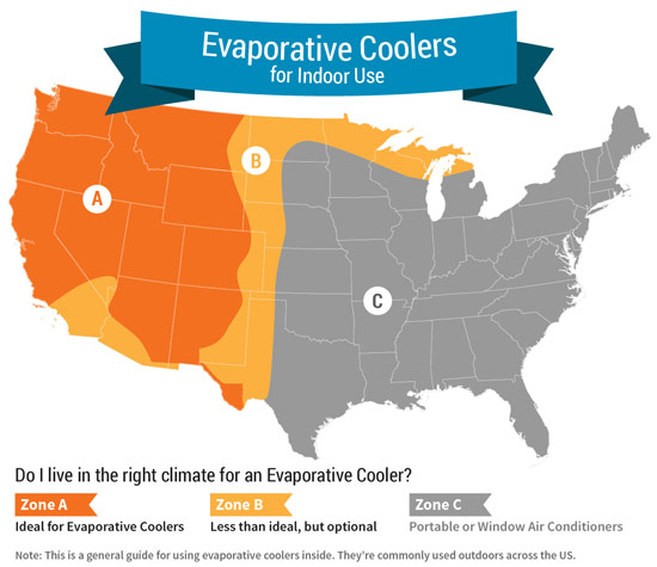 Although the name “swamp cooler” sounds like it would cool muggy, swamp-like conditions, these machines would actually be ineffective in warm, humid areas like the southeastern United States because the air is so heavily saturated with moisture.
Evaporative coolers tend to work best when relative humidity is 60% or less; however, evaporative coolers can work in humid conditions when they are used in semi-outdoor (loading bays and docks, garages) and outdoor conditions (sporting events, festivals) for moisture evaporation.
Because of the potential for moisture build-up indoors, an open window or door is required for use and not recommended for indoor use in humid climates. For people living in more humid climates who are searching for a cost-effective alternative to traditional central air conditioning systems, consider portable air conditioners or window air conditioners.
Although the name “swamp cooler” sounds like it would cool muggy, swamp-like conditions, these machines would actually be ineffective in warm, humid areas like the southeastern United States because the air is so heavily saturated with moisture.
Evaporative coolers tend to work best when relative humidity is 60% or less; however, evaporative coolers can work in humid conditions when they are used in semi-outdoor (loading bays and docks, garages) and outdoor conditions (sporting events, festivals) for moisture evaporation.
Because of the potential for moisture build-up indoors, an open window or door is required for use and not recommended for indoor use in humid climates. For people living in more humid climates who are searching for a cost-effective alternative to traditional central air conditioning systems, consider portable air conditioners or window air conditioners.
How do swamp coolers compare with traditional air conditioning systems in terms of cost-effectiveness, energy-efficiency, and environmental impact?
The goal of both of swamp coolers and traditional ACs is to cool your space. However, swamp coolers are available at a lower overall price point, are more energy efficient, and are much more environmentally friendly than traditional air conditioning systems. Evaporative air coolers come in a variety of designs and capacities – evaporative coolers by brands like Hessaire, Whirlpool and Honeywell can easily be moved from room-to-room, or sit them outside on patios, decks, or pavilions. Further, brands like Portacool offer efficient swamp coolers for industrial spaces like barns, auto garages, hangars, docks, warehouses, and more. More importantly, many swamp coolers require only minor to moderate setup, such as placement of air filters or window mounting.- Energy-Efficiency: The use of simple technology to cool your indoor air helps portable air coolers excel at energy-efficiency. Compared to air conditioners that use compressors and refrigerants, swamp coolers use only water, a fan, and pump to saturate the cooling media to create cool air.
- Cost-Effective: A 36-inch evaporative air cooler operating for eight hours typically costs less than one dollar because the only costs associated with operating it are water and electricity. This is almost three times cheaper than traditional cooling costs, as operating swamp coolers costs up to 50 percent less.
- Environmentally-Friendly: For environmentally-conscious consumers, swamp coolers are an ideal solution for keeping cool without harming the environment. Unlike traditional air conditioners that use refrigerants to cool your home, swamp coolers use a natural process that cools the air using motion and water. This process won’t add ozone-harming pollutants or other chemicals to the environment.
Wallpaper makes a Comeback by Joe Szabo, Scottsdale Real Estate Team
 With a heady series of updates, the return of printed wallpaper remains high on most decorators design agendas, with continued interest going into 2019. For 2019 expect to start seeing inspiring wallpaper updates to bring life and great design to any space, from commercial to residential. Unique floral prints and patterns are also making a big comeback as we’re noting more botanical-inspired wallpapers on the market. Texture also features heavily for the best wallpaper options for 2019, helping to create an interesting, cozy environment in your home.
We are also seeing a move back towards more traditional wallpaper designs inspired by the past; there is plenty of flocked inspired paper available, and we are seeing more traditional designs and colors make a refreshing come back as well. There’s such a wide variety of things going on in the world of wallpaper at the moment (even sustainable and eco-friendly options) that are certain to inspire you. Here’s our take on the most stylish wallpaper ideas for 2019 and beyond.
With a heady series of updates, the return of printed wallpaper remains high on most decorators design agendas, with continued interest going into 2019. For 2019 expect to start seeing inspiring wallpaper updates to bring life and great design to any space, from commercial to residential. Unique floral prints and patterns are also making a big comeback as we’re noting more botanical-inspired wallpapers on the market. Texture also features heavily for the best wallpaper options for 2019, helping to create an interesting, cozy environment in your home.
We are also seeing a move back towards more traditional wallpaper designs inspired by the past; there is plenty of flocked inspired paper available, and we are seeing more traditional designs and colors make a refreshing come back as well. There’s such a wide variety of things going on in the world of wallpaper at the moment (even sustainable and eco-friendly options) that are certain to inspire you. Here’s our take on the most stylish wallpaper ideas for 2019 and beyond.
BIRD PRINTS
 Add a sense of play in any room in your home with bold bird printed wallpaper with an oversized scale to really maximize the look. Our interior designers love Salamndre’s iconic and wildly popular flamingo and various bird prints.
They’re great for adding depth in a room via an accent wall or for small areas like powder rooms and entryways.
Add a sense of play in any room in your home with bold bird printed wallpaper with an oversized scale to really maximize the look. Our interior designers love Salamndre’s iconic and wildly popular flamingo and various bird prints.
They’re great for adding depth in a room via an accent wall or for small areas like powder rooms and entryways.
GRAPHIC GEOMETRY
 Channel the heady spirit of the Art-Deco era with a graphic and symmetrical geometrically printed wall covering that’ll be sure to never go out of style while adding a sense of every day glamor in your home.
To get the look right and keep it timeless, go for classic colors that you won’t tire of as trends come and go.
Channel the heady spirit of the Art-Deco era with a graphic and symmetrical geometrically printed wall covering that’ll be sure to never go out of style while adding a sense of every day glamor in your home.
To get the look right and keep it timeless, go for classic colors that you won’t tire of as trends come and go.
PERSONALITY-FILLED
 Another playful and iconic print, take a cue from Fornasetti’s hanging plate-inspired graphic wallpaper that’ll energize even the simplest of spaces.
It’ll be sure to spark conversations and create a lot of daily joy thanks to its witty and bold print.
Another playful and iconic print, take a cue from Fornasetti’s hanging plate-inspired graphic wallpaper that’ll energize even the simplest of spaces.
It’ll be sure to spark conversations and create a lot of daily joy thanks to its witty and bold print.
BOLD STRIPES
 Go graphic with bold stripes that’ll never feel dated as long as you stick with classic colors that are easy on the eye. Think warm neutrals and strong colors for a crisp look.
Stripes are also great for making a small space appear to be larger than it really is and pair well with all kinds of furnishings and just about every design style.
Go graphic with bold stripes that’ll never feel dated as long as you stick with classic colors that are easy on the eye. Think warm neutrals and strong colors for a crisp look.
Stripes are also great for making a small space appear to be larger than it really is and pair well with all kinds of furnishings and just about every design style.
CHEVRON
 Though a perennial classic, modern and unexpected updates and breaks in otherwise straightforward chevron prints feel fresh and boast conversation-starting power to boot.
As illustrated above, if the chevrons were filled in and not spaced apart, the wall might come off as heavy. Instead, it retains a unique look that’s bolstered by a trio of complimentary colors that are easy on the eyes.
Though a perennial classic, modern and unexpected updates and breaks in otherwise straightforward chevron prints feel fresh and boast conversation-starting power to boot.
As illustrated above, if the chevrons were filled in and not spaced apart, the wall might come off as heavy. Instead, it retains a unique look that’s bolstered by a trio of complimentary colors that are easy on the eyes.
BATIK
 Batik rugs, linens, and wallpaper have been trending over the past few years thanks to their muted prints with a lived-in feel, graphic symmetry, and small scaled patterns.
We love how the decorator realizing the room featured above took the pattern a step farther by creating a rich yet subtle mix of various batik patterns and prints for a densely rich, layered look. And as you can see, batik bedroom wallpaper designs are a great direction when looking to create a soothing oasis that’s still rich in print.
Batik rugs, linens, and wallpaper have been trending over the past few years thanks to their muted prints with a lived-in feel, graphic symmetry, and small scaled patterns.
We love how the decorator realizing the room featured above took the pattern a step farther by creating a rich yet subtle mix of various batik patterns and prints for a densely rich, layered look. And as you can see, batik bedroom wallpaper designs are a great direction when looking to create a soothing oasis that’s still rich in print.
SOLID/TONAL
 By going completely solid or tonal, you’ll give any space a more polished and sophisticated feel while adding distinctively rich texture. Plus, by going tonal you’ll be able to keep walls looking more fresh with ease than say, compared to an all white painted wall.
Ultimately, tonal wallpaper will work to illustrate your attention to detail while celebrating the joys of elegant, quiet design.
By going completely solid or tonal, you’ll give any space a more polished and sophisticated feel while adding distinctively rich texture. Plus, by going tonal you’ll be able to keep walls looking more fresh with ease than say, compared to an all white painted wall.
Ultimately, tonal wallpaper will work to illustrate your attention to detail while celebrating the joys of elegant, quiet design.
ASIAN INSPIRED
 It may come as a surprise to see Asian-inspired styles when considering modern wallpaper for your home as they haven’t been popular since the early 90’s, but there’s always an exception when traditional styles get glorious updates.
From metallic finishes to intricate details, there’s something to said about the beauty of Chinoiserie flora and fauna elevating a room. And if Asian-inspired wallpaper wasn’t inspiring enough, look at how clever the placement the dining room wallpaper featured above is. By only placing the wallpaper within molded rectangles, the look comes off as though they are traditional screens. Pretty clever indeed.
It may come as a surprise to see Asian-inspired styles when considering modern wallpaper for your home as they haven’t been popular since the early 90’s, but there’s always an exception when traditional styles get glorious updates.
From metallic finishes to intricate details, there’s something to said about the beauty of Chinoiserie flora and fauna elevating a room. And if Asian-inspired wallpaper wasn’t inspiring enough, look at how clever the placement the dining room wallpaper featured above is. By only placing the wallpaper within molded rectangles, the look comes off as though they are traditional screens. Pretty clever indeed.
SILHOUETTES
 Though cameos and silhouettes have gone in and out of popularity since the Victorian-era, blame it on artist Kara Walker’s large scale cut paper and wall covering works featuring a bastion of surprising silhouettes, for the resurgence of silhouette wallpaper.
And while Kara Walker’s are deeply thought provoking while touching on darker parts of American history, there’s no reason to not take a cue from her expressive work when say, considering the best wallpaper for girls, or options that will lend a giddy sense of play to any room. Be on the lookout for unmistakable yet intriguing elements hidden throughout with modern silhouette wallpaper.
Though cameos and silhouettes have gone in and out of popularity since the Victorian-era, blame it on artist Kara Walker’s large scale cut paper and wall covering works featuring a bastion of surprising silhouettes, for the resurgence of silhouette wallpaper.
And while Kara Walker’s are deeply thought provoking while touching on darker parts of American history, there’s no reason to not take a cue from her expressive work when say, considering the best wallpaper for girls, or options that will lend a giddy sense of play to any room. Be on the lookout for unmistakable yet intriguing elements hidden throughout with modern silhouette wallpaper.
TERRAZO
 With Terrazo, that 80’s era marble-inspired flecked print, seriously trending over the past few seasons on everything from upholstery to bathroom accessories, it was only a matter of time that it would appear as a riotous contender when considering modern wallpaper for your home.
Playful, abstract, and forever-cool, Terrazo wallpaper ideas are great for a home with transitional or mid-century modern interior design as it works perfectly with the era’s and mood of both. Plus, since its background is usually based around a common neutral, it will help any room appear larger and brighter.
With Terrazo, that 80’s era marble-inspired flecked print, seriously trending over the past few seasons on everything from upholstery to bathroom accessories, it was only a matter of time that it would appear as a riotous contender when considering modern wallpaper for your home.
Playful, abstract, and forever-cool, Terrazo wallpaper ideas are great for a home with transitional or mid-century modern interior design as it works perfectly with the era’s and mood of both. Plus, since its background is usually based around a common neutral, it will help any room appear larger and brighter.
ANIMALIER
 Perfect for sultry bedroom wallpaper designs, animal prints from cheetah to leopard to zebra can lend any space a distinctive sense of elevated glamor that’s not for the tame at heart.
Rev a room up a notch by bringing in a full-on print or an accent wall featuring a sumptuous animal print that will make any area or room a stand-out to be remembered.
Perfect for sultry bedroom wallpaper designs, animal prints from cheetah to leopard to zebra can lend any space a distinctive sense of elevated glamor that’s not for the tame at heart.
Rev a room up a notch by bringing in a full-on print or an accent wall featuring a sumptuous animal print that will make any area or room a stand-out to be remembered.
ILLUSION WALLPAPER
 For conversation-starting wallpaper ideas, consider going for a trompe l’oeil or illusion wallpaper for an unexpected and playful approach. From faux foliage to doors like the paper panel pictured here from Maison Martin Margiela, there’s plenty of fun options to bring into your home.
The key here is that they should feel photo-realistic and should not be intended to replicate nature scenes like a 70’s era rumpus room would. No pond scenes, no faux brick prints. Instead, keep it elegant with a print that evokes the familiar for a grown-up take on playful interior design elements.
For conversation-starting wallpaper ideas, consider going for a trompe l’oeil or illusion wallpaper for an unexpected and playful approach. From faux foliage to doors like the paper panel pictured here from Maison Martin Margiela, there’s plenty of fun options to bring into your home.
The key here is that they should feel photo-realistic and should not be intended to replicate nature scenes like a 70’s era rumpus room would. No pond scenes, no faux brick prints. Instead, keep it elegant with a print that evokes the familiar for a grown-up take on playful interior design elements.
LARGE-SCALE FLORALS
 Though it sounds prehistoric to reserve floral wallpaper for girls (exclusively) in this day and age, there’s something to be said about the intriguing, modern effect over-scaled florals can lend a more feminine space instantly.
From a small bathroom to a grand bedroom, bold, oversized floral blooms will make any room appear larger, more pulled-together, and unique.
Though it sounds prehistoric to reserve floral wallpaper for girls (exclusively) in this day and age, there’s something to be said about the intriguing, modern effect over-scaled florals can lend a more feminine space instantly.
From a small bathroom to a grand bedroom, bold, oversized floral blooms will make any room appear larger, more pulled-together, and unique.
MARBLEIZED
 When it comes to exciting and unexpected wallpaper ideas, our interior designers were unanimous in their appreciation for the organic feel marbleized printing techniques lend some of today’s most interesting options.
And with marble a forever-trend in our books, it comes as no surprise. From marble effect printed linens to marble drawer pulls, the veiny appeal of the stone brings with it some inspiring design cues. And when it comes to wallpaper ideas, marble options are sure to create a mesmerizing effect like no other print will.
When it comes to exciting and unexpected wallpaper ideas, our interior designers were unanimous in their appreciation for the organic feel marbleized printing techniques lend some of today’s most interesting options.
And with marble a forever-trend in our books, it comes as no surprise. From marble effect printed linens to marble drawer pulls, the veiny appeal of the stone brings with it some inspiring design cues. And when it comes to wallpaper ideas, marble options are sure to create a mesmerizing effect like no other print will.
METALLIC
 By now, metallics and high-shine finishes have made their way through every design facet of a modern home, and when it comes to brilliant bedroom wallpaper designs, metallics are sure to introduce everyday glam into any room with ease.
The key here is to source metallic wallpaper that features either a more classical or Art-Deco inspired graphic print and motifs so the wall covering comes off as soothing and visually light as anything else will lend the risk of appearing too busy and confusing. Even better, when paired with chair rail molding as illustrated here, the eye gets a break to keep it focused on great design rather than being distracted.
By now, metallics and high-shine finishes have made their way through every design facet of a modern home, and when it comes to brilliant bedroom wallpaper designs, metallics are sure to introduce everyday glam into any room with ease.
The key here is to source metallic wallpaper that features either a more classical or Art-Deco inspired graphic print and motifs so the wall covering comes off as soothing and visually light as anything else will lend the risk of appearing too busy and confusing. Even better, when paired with chair rail molding as illustrated here, the eye gets a break to keep it focused on great design rather than being distracted.
ARTIST’S SKETCHBOOK
 As though they were lifted from iconic fashion illustrator Antonio Lopez’s sketch book, the collage effect pictured above is full of visual wit and a terrific sense of inspiring play.
Frankly, there’s nothing like it and a similar wallpaper is certain to make your home as unique as you are. And while the style is not for the shy, go ahead and take a risk every now and then as sometimes happy accidents can be found in unexpected routes.
As though they were lifted from iconic fashion illustrator Antonio Lopez’s sketch book, the collage effect pictured above is full of visual wit and a terrific sense of inspiring play.
Frankly, there’s nothing like it and a similar wallpaper is certain to make your home as unique as you are. And while the style is not for the shy, go ahead and take a risk every now and then as sometimes happy accidents can be found in unexpected routes.
THE ULTIMATE MATCH-ALL WALLPAPER
 Speaking of risks, with a vibrant, colorful wallpaper similar to the room illustrated here, you’ll be able to bring in just about any colored items and furnishings you want as the sky is the limit when it comes to mixing and matching.
And since the pattern here is minuscule, you won’t need a heavy hand or oversaturated hues to bring it all together. In fact, with such a heady print, you could even bring in a classic beige sofa and finish it off with coordinating pillows and throws for continuity.
Speaking of risks, with a vibrant, colorful wallpaper similar to the room illustrated here, you’ll be able to bring in just about any colored items and furnishings you want as the sky is the limit when it comes to mixing and matching.
And since the pattern here is minuscule, you won’t need a heavy hand or oversaturated hues to bring it all together. In fact, with such a heady print, you could even bring in a classic beige sofa and finish it off with coordinating pillows and throws for continuity.
A MODERN MURAL
 While we aren’t ones to recommend preprinted murals, there’s something to be said about the unexpected and intimate appeal of the wallpaper featured here as it boasts a wonderful collage of varied buildings and fruit for the ultimate in unique, graphic wallpaper that no one else will have.
The key in making it work is to again, go for subtle colorways to keep the look light handed and refreshing. Perfect for an accent wall or trim, a modern mural will have guests scanning the surface with a sense of intrigue that they’ll never forget.
While we aren’t ones to recommend preprinted murals, there’s something to be said about the unexpected and intimate appeal of the wallpaper featured here as it boasts a wonderful collage of varied buildings and fruit for the ultimate in unique, graphic wallpaper that no one else will have.
The key in making it work is to again, go for subtle colorways to keep the look light handed and refreshing. Perfect for an accent wall or trim, a modern mural will have guests scanning the surface with a sense of intrigue that they’ll never forget.
OVERSIZED PAISLEY
 A more classic wallpaper option for 2019 and beyond, bold oversized paisleys will give a room a sense of feminine play while riffing on historic silhouettes to boot.
A more classic wallpaper option for 2019 and beyond, bold oversized paisleys will give a room a sense of feminine play while riffing on historic silhouettes to boot.
PALM LEAVES
 Continuing to gain traction over the past few years, palm leaves are still a heavy-duty wallpaper trend continuing into 2019. More textures and details are being introduced into modern wallpapers, and the intricate details of the palm make for a chic option. Palm printed wallpaper is available in all manner of designs – whether you are looking for something more masculine, something bright and bold, or something more calming.
Palm fronds don’t have to be all out 70’s inspired. We are loving the depth and coziness that a palm wallpaper with a black background lends a space and the light airiness that a white paper with bold green palms provides.
Continuing to gain traction over the past few years, palm leaves are still a heavy-duty wallpaper trend continuing into 2019. More textures and details are being introduced into modern wallpapers, and the intricate details of the palm make for a chic option. Palm printed wallpaper is available in all manner of designs – whether you are looking for something more masculine, something bright and bold, or something more calming.
Palm fronds don’t have to be all out 70’s inspired. We are loving the depth and coziness that a palm wallpaper with a black background lends a space and the light airiness that a white paper with bold green palms provides.
COPPER/GOLD TONES
 Copper and gold tones are an easy way to add instant glamor to any room and are heavily featured throughout wallpaper ranges; whether as a statement-making copper textured paper or embedded within a design. Warm metallics like these haven’t been popular for decades, but they are back, and feel so fresh this time around. Copper and metallic gold tones warms up modern wallpaper and add a touch of luxury to easily elevate any space.
Imagine a stunning gold wallpaper with a geometric white pattern across it – this look would evoke everyday glamor and an art-deco spirit– especially when teamed with unexpected colors and details like the neon painted beds above.
Copper and gold tones are an easy way to add instant glamor to any room and are heavily featured throughout wallpaper ranges; whether as a statement-making copper textured paper or embedded within a design. Warm metallics like these haven’t been popular for decades, but they are back, and feel so fresh this time around. Copper and metallic gold tones warms up modern wallpaper and add a touch of luxury to easily elevate any space.
Imagine a stunning gold wallpaper with a geometric white pattern across it – this look would evoke everyday glamor and an art-deco spirit– especially when teamed with unexpected colors and details like the neon painted beds above.
MUTED STRIPES
 Stripes saw a return on modern wallpaper designs 2019. The tones are more muted than we’ve seen in the past with striped wallpaper, but they look just as sharp. If you want something to make your walls more interesting, but without all too much color, choose a graphic grey and white stripe. For something more fun, but not too obvious, consider modern wallpaper with green, pink, and white stripes?
This will add a touch of luxury to any room, while at the same time helping you introduce color (this will look great with in otherwise muted and neutral room). Stripes also evoke a put-together feel when teamed with soft neutrals, perfect for creating a warming and inviting space.
Stripes saw a return on modern wallpaper designs 2019. The tones are more muted than we’ve seen in the past with striped wallpaper, but they look just as sharp. If you want something to make your walls more interesting, but without all too much color, choose a graphic grey and white stripe. For something more fun, but not too obvious, consider modern wallpaper with green, pink, and white stripes?
This will add a touch of luxury to any room, while at the same time helping you introduce color (this will look great with in otherwise muted and neutral room). Stripes also evoke a put-together feel when teamed with soft neutrals, perfect for creating a warming and inviting space.
SUSTAINABLE WALLPAPER
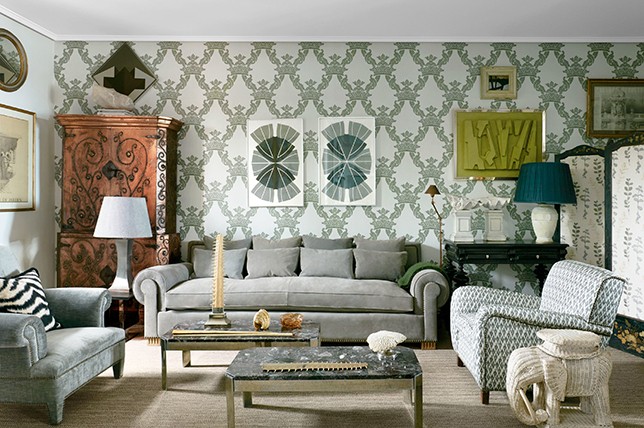 With more and more concerns over the environment being raised, increasing the level of sustainable products being produced, and making an effort to be more eco-friendly is on everyone’s agendas. Manufacturers of wallpaper are recognizing this, and modern wallpaper ranges are beginning to feature eco-friendly production, which is less harmful and impactful on the environment.
More and more wallpapers are available printed on recycled paper with water-based inks, making them much less environmentally detrimental. You also have the option to choose materials such as linen, burlap, and bamboo as an interesting alternative to standard wallpaper ideas.
With more and more concerns over the environment being raised, increasing the level of sustainable products being produced, and making an effort to be more eco-friendly is on everyone’s agendas. Manufacturers of wallpaper are recognizing this, and modern wallpaper ranges are beginning to feature eco-friendly production, which is less harmful and impactful on the environment.
More and more wallpapers are available printed on recycled paper with water-based inks, making them much less environmentally detrimental. You also have the option to choose materials such as linen, burlap, and bamboo as an interesting alternative to standard wallpaper ideas.
BOTANICAL INSPIRATION
 Think unique botanicals; not just traditional floral wallpaper with a repeated pattern covering it. This is more of an homage to the beauty found in nature – think a beautiful meadow, rather than a bouquet of flowers. Consider wallpaper that looks more like a water color painting than a basic floral print. You can go bold with colors like vibrant blues, greens, pinks, reds, and oranges, or for something a little less bold, choose more muted tones of creams, lilacs, and soft pinks.
This type of design is perfect for a feature wall; adding a touch of nature and natural form to your space. If a colorful floral design isn’t for you – there are some beautiful botanical inspired designs available in grays and neutrals alike.
Think unique botanicals; not just traditional floral wallpaper with a repeated pattern covering it. This is more of an homage to the beauty found in nature – think a beautiful meadow, rather than a bouquet of flowers. Consider wallpaper that looks more like a water color painting than a basic floral print. You can go bold with colors like vibrant blues, greens, pinks, reds, and oranges, or for something a little less bold, choose more muted tones of creams, lilacs, and soft pinks.
This type of design is perfect for a feature wall; adding a touch of nature and natural form to your space. If a colorful floral design isn’t for you – there are some beautiful botanical inspired designs available in grays and neutrals alike.
FLORAL WALLPAPERS
 You’re probably as surprised as we are to see more traditional floral wallpaper with classic pinks and purples on a floral wallpaper making a comeback. Think festive wallpaper designed with glorious, vibrant patterns, and plenty of color.
Designs like this make the perfect wallpaper for girl’s rooms – creating a charming, relaxing, and inspiring space. You can opt for cheery colors, or something more muted for a monochrome and minimalist room.
You’re probably as surprised as we are to see more traditional floral wallpaper with classic pinks and purples on a floral wallpaper making a comeback. Think festive wallpaper designed with glorious, vibrant patterns, and plenty of color.
Designs like this make the perfect wallpaper for girl’s rooms – creating a charming, relaxing, and inspiring space. You can opt for cheery colors, or something more muted for a monochrome and minimalist room.
TEXTURED GREYS
 Wallpaper designs 2019 are all about depth and texture. If you aren’t a big fan of color, then textured grays are a great option for you. While keeping your color scheme muted and monochromatic, they’ll add much-needed depth and warmth to a room.
From busy, intricate patterns to more everyday striped patterns, texture is the key to making a rooms wall coverings feel more distinctive.
Wallpaper designs 2019 are all about depth and texture. If you aren’t a big fan of color, then textured grays are a great option for you. While keeping your color scheme muted and monochromatic, they’ll add much-needed depth and warmth to a room.
From busy, intricate patterns to more everyday striped patterns, texture is the key to making a rooms wall coverings feel more distinctive.
FLOCK WALLPAPER
 Flocked wallpaper is also making a comeback, with new modern wallpaper designs updated for today. Keeping the traditional feel of flocking, the new designs keep it fresh and modern while embracing the traditional, luxurious elements of flocked wallpaper. Flocked wallpaper is often intricately detailed, with a great depth of color; making it perfect for bedroom wallpaper designs.
Wallpaper like this will add a touch of elegance and sophistication to any room, and a whole room papered in flocking will cocoon you in luxury. How about a shade of champagne, for a seriously glamorous and luxurious wall covering? But, don’t be fooled into thinking that all flocked wallpaper is dark and dramatic – there are some beautiful designs out there in off-whites and light blues and greens, which are absolutely refreshing.
Flocked wallpaper is also making a comeback, with new modern wallpaper designs updated for today. Keeping the traditional feel of flocking, the new designs keep it fresh and modern while embracing the traditional, luxurious elements of flocked wallpaper. Flocked wallpaper is often intricately detailed, with a great depth of color; making it perfect for bedroom wallpaper designs.
Wallpaper like this will add a touch of elegance and sophistication to any room, and a whole room papered in flocking will cocoon you in luxury. How about a shade of champagne, for a seriously glamorous and luxurious wall covering? But, don’t be fooled into thinking that all flocked wallpaper is dark and dramatic – there are some beautiful designs out there in off-whites and light blues and greens, which are absolutely refreshing.
DARK PATTERNS
 Not everything has to be light and bright, and the same can be said for trending wallpaper 2019. Think deep blues and greens with contrasting patterns in neutral tones. Perfect for a masculine bedroom, or a room where you are looking to introduce a dark feature wall.
The neutral pattern tones work alongside the depth of color to create interesting wallpaper ideas, which help a room feel cool at the same time as cozy and warm.
Not everything has to be light and bright, and the same can be said for trending wallpaper 2019. Think deep blues and greens with contrasting patterns in neutral tones. Perfect for a masculine bedroom, or a room where you are looking to introduce a dark feature wall.
The neutral pattern tones work alongside the depth of color to create interesting wallpaper ideas, which help a room feel cool at the same time as cozy and warm.
BRIGHT AND BOLD
 Bold, bright, and compelling wallpaper designs are seeing a comeback – living room, dining room, and bedroom wallpaper designs alike are trending and are more imaginative than ever before. Bright colors and extravagant prints are here to create an unforgettable statement. Forgo the quiet wallpaper popular as of late, because making an impact is back on trend.
Punchy greens and yellows are key trends, as are bold blues and pinks. If you want any room to stand out, then the sky’s the limit.
Please note that this Scottsdale Real Estate Blog is for informational purposes and not intended to take the place of a licensed Scottsdale Real Estate Agent. The Szabo Group offers first class real estate services to clients in the Scottsdale Greater Phoenix Metropolitan Area in the buying and selling of Luxury homes in Arizona. Award winning Realtors and Re/MAX top producers and best real estate agent for Luxury Homes in Scottsdale, The Szabo group delivers experience, knowledge, dedication and proven results. Contact Joe Szabo at 480.688.2020, info@ScottsdaleRealEstateTeam.com or visit www.scottsdalerealestateteam.com to find out more about Scottsdale Homes for Sale and Estates for Sale in Scottsdale and to search the Scottsdale MLS for Scottsdale Home Listings.
Bold, bright, and compelling wallpaper designs are seeing a comeback – living room, dining room, and bedroom wallpaper designs alike are trending and are more imaginative than ever before. Bright colors and extravagant prints are here to create an unforgettable statement. Forgo the quiet wallpaper popular as of late, because making an impact is back on trend.
Punchy greens and yellows are key trends, as are bold blues and pinks. If you want any room to stand out, then the sky’s the limit.
Please note that this Scottsdale Real Estate Blog is for informational purposes and not intended to take the place of a licensed Scottsdale Real Estate Agent. The Szabo Group offers first class real estate services to clients in the Scottsdale Greater Phoenix Metropolitan Area in the buying and selling of Luxury homes in Arizona. Award winning Realtors and Re/MAX top producers and best real estate agent for Luxury Homes in Scottsdale, The Szabo group delivers experience, knowledge, dedication and proven results. Contact Joe Szabo at 480.688.2020, info@ScottsdaleRealEstateTeam.com or visit www.scottsdalerealestateteam.com to find out more about Scottsdale Homes for Sale and Estates for Sale in Scottsdale and to search the Scottsdale MLS for Scottsdale Home Listings.
